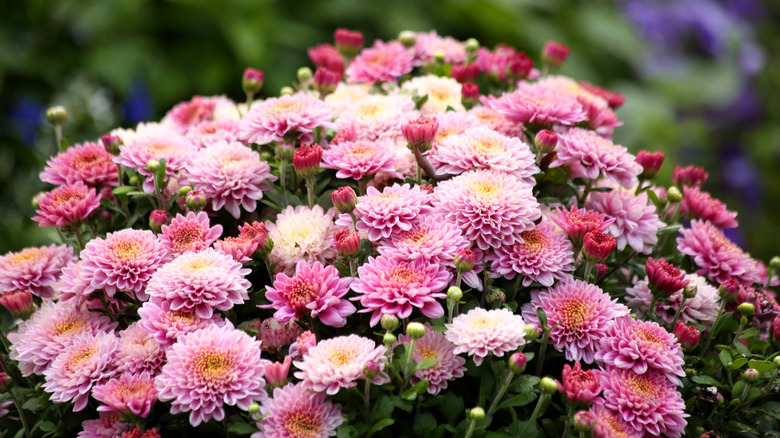Help Your Mums Survive Winter With One Simple Fall Gardening Trick
We may receive a commission on purchases made from links.
Chrysanthemums have become synonymous with autumn due to their fall-blooming flowers and range of beautiful colors such as burnt orange, red, and yellow. As such, some gardeners may be tempted to get rid of their mums as soon as they lose their blooms to the first frosts of winter. However, did you know that properly protected mums can actually survive the winter and may even act as perennials which come back the following year?
One of the best things you can do to keep mums alive year-round, especially during the colder months, is to add extra mulch over their roots in fall. As temperatures dip above and below freezing in winter, shallow flower roots can be exposed to extreme cold which leads to a substantial, and possibly even fatal, blow to their health. This is because the roots are repeatedly frozen and then thawed, causing them to burst out of the soil and sustain damage as a result. So, to avoid this from happening, it is recommended to lay down a layer of mulch toward the end of fall as this will not only protect the plant from cold temperatures but also retain heat and moisture in the soil underneath. But what mulch should you use in this case, and how should you apply it for the proper protection of your chrysanthemums?
How to winterize your mums using mulch
Of all the ways to use mulch in your yard and garden, utilizing it to protect your mums from the bitter winter temperatures might be one of the most rewarding. Most types of chrysanthemums grow well in USDA Hardiness Zones 5 through 9, and the area you live in will influence how easy or difficult it is to overwinter your mums. However, adding a layer of natural coverage such as straw or Home and Country Premium Pine Straw Mulch from Amazon can help give your plants the best chance at survival. Remember, however, that mulch made from leaves is not recommended in this case because it can become packed down, affecting its ability to successfully protect the roots and soil underneath.
To protect fall mums from frost as temperatures drop, simply add a generous layer of your mulch over them, making sure to cover their central stems and roots. You may wish to check on the mulch throughout the winter to ensure it is still in place and add more on top if some spots have become bare. At the start of spring, you can then carefully remove the mulch to allow the plants to take full advantage of the warming soil and sun. Keep an eye on any delicate new growth or foliage, however, as these may need to be protected from any end-of-season frosts which could damage them.

